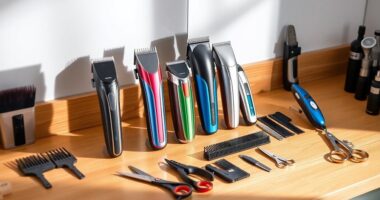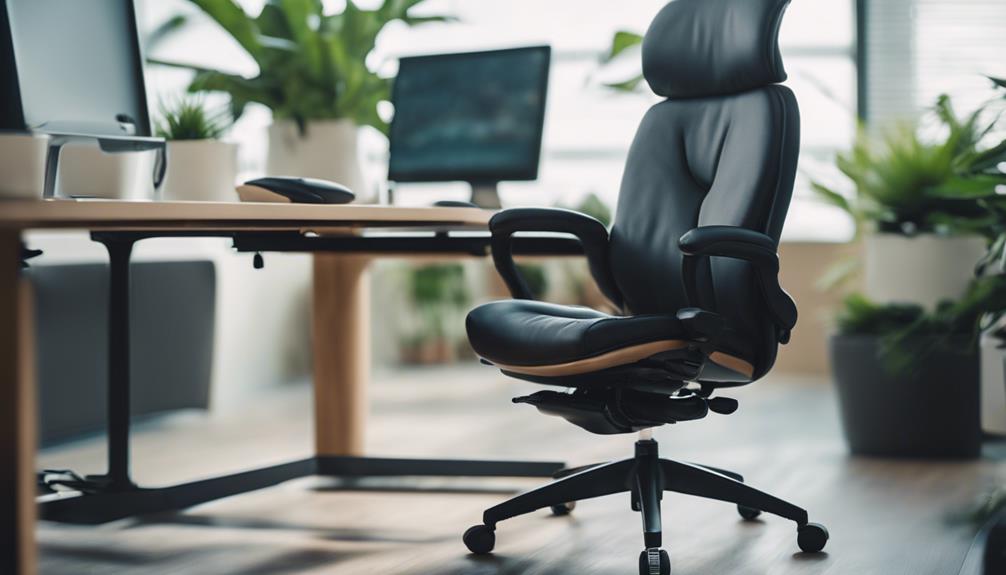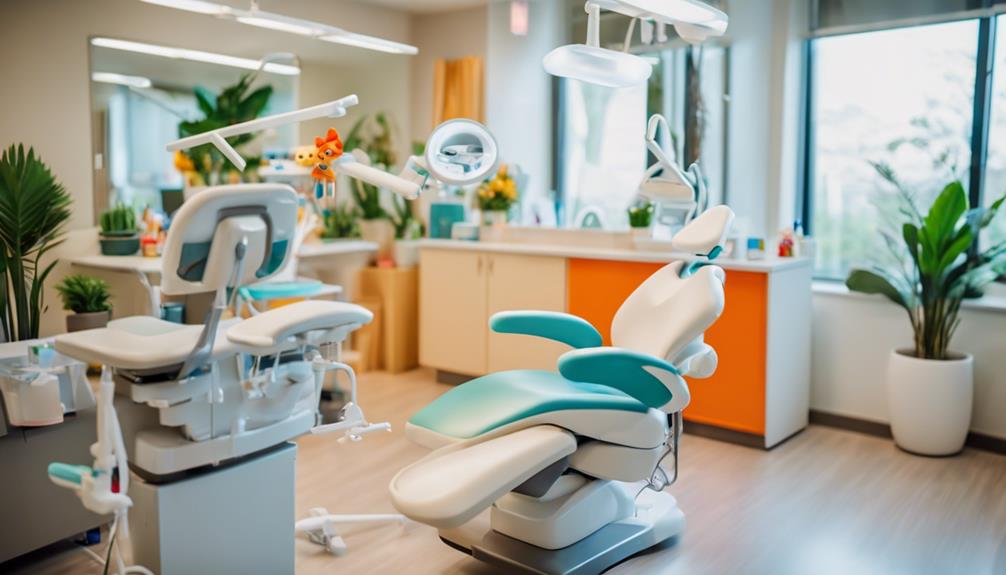In 2025, I suggest 15 essential startup books for aspiring entrepreneurs. Important titles include “The Lean Startup,” which guides rapid testing and data-driven decisions, and “Zero to One,” which focuses on creating unique businesses. “Start Your Own Business” provides practical insights for launching startups, while “Smart Startups” offers advice from successful founders. Other noteworthy books include “Startup Law and Fundraising,” which focuses on legal aspects, and “The Startup Playbook,” which is full of lessons from innovators. These resources give you foundational frameworks and strategies to navigate the startup landscape effectively. There is a lot more to discover about the insights of each title.
Key Takeaways
- Focus on Foundational Frameworks: Books like *The Lean Startup* and *The Startup Owners Manual* provide essential methodologies for launching and validating business ideas.
- Develop an Entrepreneurial Mindset: *Zero to One* and *Pattern Breakers* encourage innovative thinking and embracing uncertainty for long-term success.
- Leverage Practical Guides: Resources such as *Start Your Own Business* and *Smart Startups* offer actionable advice and real-world examples for navigating startup challenges.
- Understand Legal and Financial Aspects: *Startup Law and Fundraising* and *Buy Then Build Strategy* guide entrepreneurs through compliance and risk management in business endeavors.
Zero to One: Notes on Startups, or How to Build the Future

For entrepreneurs enthusiastic to innovate and challenge conventional wisdom, *Zero to One* is an essential read that uncovers the profound insights necessary for building a successful startup.
In this book, Peter Thiel presents a unique perspective on innovation and competition. He argues that true entrepreneurship involves creating entirely new businesses that lead to economic growth through groundbreaking products.
I found his view on monopolies particularly intriguing; Thiel suggests they can actually drive more innovation than competition does. He encourages us to be 'Definite Optimists,' focusing on long-term goals.
This book isn't just theoretical; it provides practical insights for startup founders, emphasizing the importance of hard work and the willingness to explore hidden opportunities.
It's a must-read for anyone serious about entrepreneurship.
Best For: Entrepreneurs and startup founders looking to innovate and challenge traditional business models.
Pros:
- Engaging writing style that encourages deep reflection and understanding of complex concepts.
- Unique perspective on monopolies that provides a refreshing take on competition and innovation.
Cons:
- Some ideas may be considered controversial, particularly the positive view on monopolies.
- The book may require a certain level of prior knowledge about startups and entrepreneurship for full comprehension.
The Lean Startup: How Today's Entrepreneurs Use Continuous Innovation to Create Successful Businesses

Entrepreneurs seeking a practical framework for maneuvering uncertainty and driving innovation will find 'The Lean Startup' an invaluable resource, packed with actionable insights and real-world applications.
Eric Ries introduces core principles like the Build-Measure-Learn feedback loop, which encourages developing a minimum viable product (MVP) to test ideas rapidly. This approach fosters validated learning, allowing entrepreneurs to adjust based on actual customer feedback rather than assumptions.
Ries emphasizes the importance of being flexible—knowing when to pivot or persevere based on data. Although some may argue that the method can stifle bold decision-making, its impact on product development and innovation is undeniable.
Overall, 'The Lean Startup' is essential reading for anyone interested in creating a successful business in today's fast-paced environment.
Best For: Entrepreneurs and established businesses looking for a structured approach to innovation and product development in uncertain markets.
Pros:
- Encourages rapid testing and iteration through the Build-Measure-Learn feedback loop.
- Promotes data-driven decision-making by prioritizing validated learning over assumptions.
Cons:
- May inhibit bold decision-making due to its focus on incremental improvements.
- Lacks specific implementation methods, relying more on high-level concepts.
Start Your Own Business: The Only Startup Book Youll Ever Need

With over 800 pages of extensive insights, 'Start Your Own Business: The Only Startup Book You'll Ever Need' is perfect for anyone looking to navigate the complexities of launching a new venture.
This thorough guide covers essential topics like marketing, taxes, and payment methods, making it an invaluable resource for new entrepreneurs.
I found the layout easy to understand, with helpful tips and quotes from industry professionals on nearly every page.
While some sections on employees and inventories mightn't apply to sole proprietors, the overall content is still beneficial.
It also includes blank charts and checklists to help organize your thoughts.
I highly recommend this book for anyone unsure of their business structure or seeking a solid foundation in business concepts.
Best For: Individuals looking to start a business and gain a comprehensive understanding of essential entrepreneurial concepts.
Pros:
- Provides extensive coverage of crucial business topics like marketing, taxes, and payment methods.
- Easy-to-understand layout with helpful tips and quotes from industry professionals throughout.
Cons:
- Some content on employees and inventory may not be relevant for sole proprietors.
- The physical weight of the book may make it cumbersome to handle.
Start. Scale. Exit. Repeat.: Serial Entrepreneurs Secrets Revealed!

This book is perfect for aspiring and seasoned entrepreneurs who want a clear roadmap to navigate the complex journey of building and exiting a successful business.
'Start. Scale. Exit. Repeat.' breaks down the entrepreneurial process into four key phases: Start, Scale, Exit, and Repeat. Each section provides practical insights and actionable strategies, from market research to team building.
I found the focus on exit strategies particularly valuable, as it prepares us for future growth and sustainability.
The contributions from over 30 experts enrich the content with diverse perspectives and real-life case studies.
The engaging writing style makes this book accessible, ensuring that both new and experienced entrepreneurs can easily grasp essential concepts for success.
Best For: Aspiring and seasoned entrepreneurs looking for a clear roadmap to navigate the complexities of building and exiting a successful business.
Pros:
- Provides practical insights and actionable strategies applicable to various stages of entrepreneurship.
- Focuses on exit strategies, preparing entrepreneurs for long-term growth and sustainability.
Cons:
- May be overwhelming for complete beginners due to the breadth of information presented.
- Some readers might prefer more in-depth coverage on specific topics rather than a broad overview.
The Startup Playbook: Secrets of Fastest-Growing Startups

For anyone enthusiastic to glean insights from the journeys of successful innovators like Elon Musk and Caterina Fake, 'The Startup Playbook' offers a treasure trove of actionable advice and motivational stories.
Written by David Kidder, this book features interviews with various successful entrepreneurs, revealing what made them thrive in the competitive landscape of Internet entrepreneurship.
The key themes include perseverance, hard work, and the importance of being a first mover.
I appreciate how the book inspires readers without overwhelming them, presenting practical lessons that are easy to digest.
While the layout could improve for clarity, the content itself is engaging and insightful, making it a must-read for aspiring entrepreneurs keen to learn from the successes and failures of others.
Best For: Aspiring entrepreneurs, small business owners, and individuals interested in learning from the experiences of successful innovators.
Pros:
- Provides actionable insights and motivational stories from successful entrepreneurs.
- Focuses on key themes like perseverance and first-mover advantage, which are essential for startup success.
Cons:
- The layout could be confusing at times, making it difficult to identify who is speaking.
- Some readers may prefer fewer case studies to allow for deeper exploration of each story.
The SaaS Playbook: Build a Multimillion-Dollar Startup Without Venture Capital

Aspiring SaaS entrepreneurs seeking practical guidance will find 'The SaaS Playbook' an invaluable resource for building a multimillion-dollar startup without relying on venture capital.
This book stands out for its tailored strategies specifically designed for SaaS businesses. It offers a wealth of actionable advice on critical topics like pricing, metrics, and the right mindset for success.
What I appreciate most is how accessible it's for both technical and non-technical readers. It empowers those without much technical background to start building their applications confidently.
The supportive community surrounding the book, including a private Slack group, further enhances the learning experience.
While it may lack depth in some areas, it's still a fantastic guide for traversing the SaaS landscape effectively.
Best For: Aspiring SaaS entrepreneurs looking for practical guidance to build a successful startup without venture capital.
Pros:
- Offers tailored strategies specifically designed for SaaS businesses.
- Accessible to both technical and non-technical readers, empowering all to start building applications.
Cons:
- Lacks depth in marketing and lead generation strategies.
- Frequent use of abbreviations may be challenging for unfamiliar readers.
Problem Hunting: The Tech Startup Textbook

'Problem Hunting: The Tech Startup Textbook' stands out as a must-read for entrepreneurs and product managers enthusiastic to navigate the complexities of launching and scaling tech companies.
Brian Long takes a humanistic approach, alleviating the intimidation often felt in entrepreneurship. He provides a practical framework that simplifies the startup process, offering concrete examples like effective fundraising strategies.
The book breaks down each stage of building a tech company step by step, ensuring readers stay focused despite challenges.
Brian shares personal experiences from his ventures, which enhance the narrative and provide insightful lessons on problem-solving and decision-making.
This book serves as a valuable resource, making it an essential addition to any aspiring entrepreneur's library.
Best For: Aspiring entrepreneurs and product managers seeking practical guidance and insights into launching and scaling tech companies.
Pros:
- Offers a humanistic approach that makes entrepreneurship less intimidating.
- Provides clear, actionable frameworks and real-life examples to guide readers.
Cons:
- Some readers may find the focus on tech startups limiting if they are interested in other industries.
- The conversational style may not appeal to those who prefer more formal academic texts.
The $100 Startup: Reinvent the Way You Make a Living

Targeting individuals enthusiastic to break free from traditional careers, The $100 Startup offers practical insights for launching profitable businesses with minimal investment.
Chris Guillebeau's book is a valuable resource for aspiring entrepreneurs, especially those earning at least $50,000 annually. It's filled with checklists and guidelines that guide readers through the shift from conventional jobs to self-employment.
Guillebeau shares success stories from real entrepreneurs, emphasizing the importance of aligning business ventures with personal passions. While the book inspires creativity and positivity, it may not address why certain ideas fail.
Overall, this book opened my eyes to unexpected opportunities and encouraged me to think differently about my career path, making it a must-read for anyone considering entrepreneurship.
Best For: Individuals earning at least $50,000 annually who are eager to transition from traditional jobs to self-employment and entrepreneurship.
Pros:
- Well-structured and easy-to-read format that avoids information overload.
- Inspiring success stories that emphasize aligning business with personal passions.
Cons:
- Limited insights into why certain business ideas might fail.
- May not resonate with individuals content in their current jobs seeking higher income levels.
Buy Then Build: How Acquisition Entrepreneurs Outsmart the Startup Game

For entrepreneurs looking to minimize risk and maximize success, 'Buy Then Build' offers a compelling approach by showing how acquiring existing businesses can lead to a 95% success rate compared to the staggering 90% failure rate of traditional startups.
The book introduces the concept of Acquisition Entrepreneurship, where I can leverage established operations, customer bases, and cash flow.
Walker Deibel emphasizes financial advantages, like paying 2 to 4 times Seller Discretionary Earnings for profitable companies.
He provides a step-by-step guide on self-assessment, market evaluation, and deal execution. This structured approach helps me navigate challenges, ensuring I make informed decisions.
With personal success stories and practical strategies, 'Buy Then Build' is an essential read for anyone considering this dynamic path to entrepreneurship.
Best For: Aspiring entrepreneurs and business owners seeking a lower-risk path to success through acquiring established businesses.
Pros:
- Established Operations: Acquiring a business allows for immediate access to existing operations, which can lead to quicker profitability.
- Higher Success Rate: The model boasts a 95% success rate compared to a 90% failure rate for traditional startups, making it a more reliable option.
Cons:
- Upfront Capital Required: Acquiring an existing business often requires significant initial investment, which may not be feasible for all entrepreneurs.
- Limited Control Over Existing Practices: New owners may face challenges in changing established business practices or cultures.
The Startup Owners Manual: Step-By-Step Guide for Building a Great Company

Entrepreneurs seeking a practical and detailed roadmap for building a successful startup will find 'The Startup Owners Manual' an invaluable resource. This thorough guide outlines four key steps to create a viable business model, with a strong focus on customer discovery in the first two steps. Its structured approach helps entrepreneurs develop both physical and digital products effectively.
What I appreciate most is the book's actionable advice, which saves time and reduces the likelihood of common mistakes.
While it spans 600 pages, I believe some sections could be condensed for easier reference.
Overall, this manual distinguishes startups from traditional businesses and provides insightful guidance on product assessment and future planning, making it essential reading for aspiring entrepreneurs.
Best For: Entrepreneurs looking for a comprehensive and practical guide to building a successful startup and developing a scalable business model.
Pros:
- Actionable advice that helps save time and avoid common startup pitfalls.
- Clear distinction between startups and traditional businesses, offering relevant insights.
Cons:
- Lengthy content that some readers feel could be condensed significantly.
- Focus on early steps may leave less experienced entrepreneurs wanting more information on later stages.
The Lean Startup: How Today's Entrepreneurs Use Continuous Innovation to Create Successful Businesses

Aimed at aspiring business leaders, 'The Lean Startup' offers invaluable insights into how continuous innovation can drive success in today's competitive market.
This book emphasizes the importance of adapting and evolving through feedback and experimentation. It teaches entrepreneurs to test their ideas quickly and efficiently, minimizing waste while maximizing learning.
Some readers have found it less engaging than expected, questioning its practical application. However, many appreciate the structured approach to innovation it presents.
The arrival condition of the book can impact the reading experience, as some have noted excitement when receiving it.
Overall, 'The Lean Startup' remains an essential read, providing a framework that can help shape the future of any aspiring entrepreneur's journey.
Best For: aspiring entrepreneurs and business leaders looking to innovate and succeed in a competitive market.
Pros:
- Provides a structured approach to continuous innovation and experimentation.
- Encourages quick testing of ideas to minimize waste and maximize learning.
Cons:
- Some readers find the book less engaging and question its practical application.
- Mixed reviews indicate varying effectiveness as a guide or source of inspiration.
Pattern Breakers: Why Some Start-Ups Change the Future

Those seeking to break the mold in the startup world will find 'Pattern Breakers' an essential resource, packed with insights from industry leaders like Mike Maples. This book challenges traditional startup methods, encouraging entrepreneurs to embrace uncertainty and think differently.
It introduces a framework called 'inflection, insight, idea, movement,' guiding readers through the process of transforming innovative concepts into successful ventures. Maples emphasizes that many groundbreaking ideas thrive when they're misunderstood at first, illustrating how founders can tap into niche markets.
By understanding how technology and societal shifts reshape consumer behavior, aspiring entrepreneurs can position themselves for success. Overall, 'Pattern Breakers' serves as a crucial tool for anyone looking to innovate and make a significant impact in the startup landscape.
Best For: Entrepreneurs and aspiring startup founders seeking to challenge conventional methodologies and innovate in their respective fields.
Pros:
- Provides a unique framework for navigating the complexities of startup development.
- Encourages a mindset that embraces uncertainty, fostering creativity and resilience.
Cons:
- May be overwhelming for beginners unfamiliar with startup concepts and terminology.
- Some readers might find the emphasis on niche markets limiting for broader applications.
Starting a Business QuickStart Guide

This guide is perfect for anyone with a business idea but feeling lost on how to bring it to life. It serves as a thorough resource, simplifying the complex logistics of launching a successful small business.
I found it particularly helpful as it breaks down various aspects into easy-to-understand segments, making the entrepreneurial journey feel more achievable.
The book's structure allows for selective reading, so I could focus on areas I needed most. While some chapters, especially on pricing, felt repetitive, the later sections on business and marketing plans were insightful.
Overall, this guide is an ideal starting point for aspiring entrepreneurs, especially those with minimal capital, helping them navigate the essential components of launching a business.
Best For: Individuals with a business idea who feel lost on how to bring it to life and need guidance in launching a small business.
Pros:
- Simplifies the complex logistics of starting a business, making it accessible for beginners.
- Allows for selective reading, enabling users to focus on relevant topics.
Cons:
- Some chapters, particularly on pricing, can feel repetitive and lack depth.
- May not be as beneficial for those who have already made significant business decisions.
Smart Startups: Advice from 18 Harvard Business School Founders

Entrepreneurs seeking relatable, real-world insights will find 'Smart Startups' a valuable companion, offering lessons from 18 successful Harvard Business School founders.
The authors, Jim Sherman and Catalina Daniels, break down complex concepts into accessible advice, creating a friendly and conversational tone. They emphasize the importance of learning from both successes and mistakes, fostering a sense of transparency that builds trust.
The book provides structured guidance, urging readers to revisit sections as their businesses evolve. Engaging narratives illustrate unexpected challenges and pivots, making the lessons applicable not just for startups but also for established companies.
With practical insights derived from real-life experiences, 'Smart Startups' is an essential read for anyone steering through the entrepreneurial journey.
Best For: Aspiring entrepreneurs and established business owners seeking practical insights and relatable advice from successful founders.
Pros:
- Engaging and accessible writing style that simplifies complex entrepreneurial concepts.
- Real-world case studies provide relatable lessons and emphasize the importance of adapting to customer needs.
Cons:
- Focus on specific case studies may not cover every industry or entrepreneurial scenario comprehensively.
- Potential for information overload as readers navigate through various lessons and experiences.
Startup Law and Fundraising for Entrepreneurs and Startup Advisors

Maneuvering the complex legal landscape of startups makes 'Startup Law and Fundraising for Entrepreneurs and Startup Advisors' an indispensable guide for entrepreneurs and advisors alike.
This book dives deep into the essential legal and regulatory issues that startups face, from choosing the right business entity to understanding intellectual property rights.
It offers practical tips and checklists, which I found incredibly helpful for avoiding common pitfalls. The inclusion of real-world case studies brings the material to life, making it easier to grasp how legal concepts impact actual business scenarios.
While it's not exhaustive for later-stage companies, I believe it's a must-read for anyone involved in startup formation.
This resource has truly equipped me with the knowledge to navigate my entrepreneurial journey confidently.
Best For: Entrepreneurs, startup advisors, and legal professionals seeking practical insights into the legal and regulatory frameworks affecting startup businesses.
Pros:
- Comprehensive coverage of essential legal topics from entity selection to intellectual property.
- Practical tips, checklists, and real-world case studies that enhance understanding and applicability.
Cons:
- May not cover later-stage company legal issues in depth.
- Lacks extensive quantitative analysis, which might not satisfy all readers.
Factors to Consider When Choosing Startup Books

When I choose startup books, I consider several key factors.
First, I look at the author's expertise and background to guarantee they're credible.
Next, I think about how practical the content is and whether it aligns with my needs as a reader.
Author Expertise and Background
How can an author's expertise and background shape the insights and advice found in startup books?
When I choose a startup book, I often look for authors with proven entrepreneurial success or extensive industry experience. This credibility can greatly influence the relevance of the content. Authors who've built businesses or led successful startups typically share real-life case studies and personal anecdotes, making their advice more relatable.
I also consider the author's educational background. Those with strong foundations in entrepreneurship or business theory often provide structured, research-backed guidance. Engaging with entrepreneurial communities or contributing to business education can enrich their insights, ensuring the content reflects current market conditions.
Additionally, an author's specific industry experience can tailor their advice to unique trends and challenges within that field. I find that previous entrepreneurial ventures add depth to a book, as these authors share practical lessons learned from real-world experiences. Recognition and accolades, like awards for innovation, can further indicate an author's expertise.
Practicality of Content
Focusing on the practicality of content is essential for selecting startup books that truly resonate with my entrepreneurial journey. I look for books that provide actionable strategies and insights, like frameworks for building and scaling businesses. These practical applications help me navigate real-world scenarios effectively.
I also prioritize resources that emphasize customer feedback and iteration, as these concepts are critical for product development and achieving market fit. Step-by-step guidance or checklists are invaluable, simplifying complex processes and keeping me organized. Evaluating the depth of the content is significant; books with detailed case studies and examples enhance my understanding of how principles apply in various contexts.
Moreover, I seek texts that address specific challenges entrepreneurs face, such as funding strategies or exit planning. Structured guidance allows me to review chapters based on my immediate needs or the stage of my startup journey.
Target Audience Alignment
Understanding my target audience is essential for choosing startup books that truly meet their needs and goals. Each reader comes with different experiences and expectations. For instance, aspiring entrepreneurs might seek foundational knowledge, while seasoned business owners may look for advanced strategies to scale their ventures. Identifying where I fit in this spectrum helps me select the right resources.
I also consider what type of insights my audience prefers. Some may want practical tips that can be applied immediately, while others might be more interested in theoretical frameworks. This distinction matters because it influences how engaging and useful the content will be.
Additionally, aligning the book's focus with the audience's specific goals—like launching a startup or understanding market dynamics—can greatly enhance the learning experience. Books aimed at novices usually break down complex concepts, making them easier to grasp. On the other hand, literature for experienced entrepreneurs often dives deeper into niche topics.
Ultimately, by understanding my target audience, I can choose startup books that resonate with their unique journeys, ensuring the content is both applicable and actionable for their entrepreneurial path.
Clarity and Readability
Clarity and readability are crucial when I choose startup books, as they guarantee complex concepts are easily understood and engaging for diverse readers. I look for books that use simple language and clear structures, as these help maintain my interest and facilitate a better grasp of key ideas.
When a book includes visual aids, like charts and bullet points, it breaks down information effectively and enhances my comprehension. I also appreciate a well-organized layout with headings and subheadings, allowing me to navigate the material easily and locate specific information quickly.
Engaging writing styles that incorporate anecdotes or relatable examples make the content more memorable. This is especially important for me as an aspiring entrepreneur with little prior knowledge of the field; I need clarity to absorb complex topics.
Books that provide practical applications, actionable takeaways, and relatable stories greatly improve my learning experience. They transform intricate topics into manageable segments, making it easier to grasp essential concepts.
Unique Perspectives Offered
Many startup books offer unique perspectives that challenge conventional wisdom, helping me see entrepreneurship from different angles. For instance, some authors argue that monopolies can drive innovation, pushing me to rethink competition in the business landscape. Other texts emphasize data-driven decisions through frameworks like the Build-Measure-Learn feedback loop. This contrasts with those advocating for a more instinctual approach, highlighting the diverse strategies I can adopt.
Acquisition Entrepreneurship is another concept I've encountered, showcasing the advantages of buying existing businesses over starting from scratch. This shifts my understanding of what success looks like in the startup world. I also appreciate books that focus on different stages of entrepreneurship, from starting to scaling and exiting, providing an extensive insight into the business lifecycle.
Moreover, several authors encourage embracing uncertainty and innovation, promoting a mindset that adapts to challenges. They stress understanding customer needs and market shifts, guiding me to adjust my business model as necessary. The practical applications presented in these books, along with real-world experiences, equip me with strategies to navigate the complexities of launching and growing a business effectively.
Case Studies Included
When choosing startup books, I find that those packed with case studies offer invaluable insights that bridge theory and practice, making the lessons more relatable and actionable.
For example, books like 'Start. Scale. Exit. Repeat.' showcase real-life experiences of successful entrepreneurs, simplifying complex topics. Similarly, 'The Startup Playbook' features interviews with notable entrepreneurs, revealing non-obvious lessons that reflect their unique challenges and triumphs.
In 'Problem Hunting: The Tech Startup Textbook', the author shares concrete examples and frameworks that can be directly applied, enhancing the book's practical value. 'The $100 Startup' uses detailed anecdotes to illustrate various paths to self-employment, helping aspiring business owners visualize their potential journeys.
Additionally, 'Buy Then Build' highlights testimonials and personal stories that underscore the transformative impact of acquisition entrepreneurship. Case studies often provide relatable examples of real-world applications, illustrating both successes and mistakes, which fosters transparency in the entrepreneurial process.
Actionable Strategies Provided
Choosing startup books that offer actionable strategies can considerably enhance my entrepreneurial journey by providing practical frameworks and insights I can apply immediately.
I look for books that emphasize the Build-Measure-Learn feedback loop. This cyclical process helps me iterate quickly and develop products based on real customer feedback. I also seek texts discussing validated learning, which teaches me the importance of testing assumptions through experiments rather than just guessing.
Books that highlight the pivot or persevere mentality are essential, as they encourage me to adapt my strategies based on data-driven insights. I prioritize those introducing innovation accounting, which offers frameworks for measuring progress effectively, focusing on actionable metrics instead of vanity metrics.
Guides with step-by-step frameworks guarantee I can apply concepts throughout different stages of my entrepreneurial journey. I appreciate resources that break down complex ideas into accessible insights, especially since I'm still learning.
Additionally, I prefer authors who share their successes and failures, as this transparency fosters trust and provides valuable lessons. These considerations help me choose the most relevant startup books for my growth.
Relevance to Current Trends
Understanding the relevance of current trends in the entrepreneurial landscape helps me select startup books that truly resonate with today's market dynamics. Staying updated on market trends and technological advancements is vital. Books that address these topics provide insights into the evolving entrepreneurship landscape.
I find that selecting books emphasizing innovation and adaptability is particularly beneficial. In a climate where consumer preferences shift rapidly, these themes are essential. Understanding data-driven decision-making also stands out; literature focusing on metrics aligns with contemporary business practices.
Moreover, I look for books exploring competition versus monopoly. This reflects the ongoing discourse about how startups can carve unique market positions. Practical strategies for sustainable growth are another priority since they resonate with entrepreneurs traversing complex scaling challenges.
I also consider how well a book addresses technological changes and societal shifts affecting entrepreneurship. Resources that emphasize niche market identification are invaluable, as understanding unique segments can lead to innovative solutions.
Are the Books on Startup Funding Also Included in the List of Best Startup Books for Aspiring Entrepreneurs?
Yes, the best books on startup funding are definitely included in the list of best startup books for aspiring entrepreneurs. Understanding how to secure funding is a crucial aspect of starting and growing a successful business, making these books a valuable resource for anyone looking to launch a startup.
Conclusion
In summary, diving into these 15 startup books can be a game-changer for aspiring entrepreneurs in 2025.
Each title offers unique insights and strategies, like a treasure map guiding you through the ever-evolving business landscape.
As you set out on your entrepreneurial journey, remember that knowledge is power.
So grab your favorite book and start turning those pages—your future self will thank you for it, just as I wish I'd had this wisdom back in the days of floppy disks.









